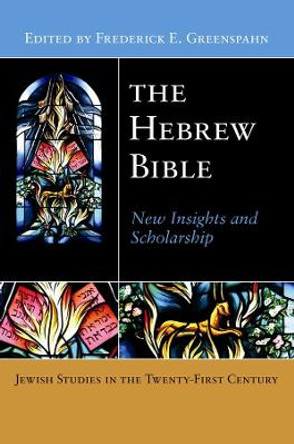Description
An exploration of the emergence of Rabbinic Judaism drawing on primary sources and new methods
Over the past generation, several major findings and methodological innovations have led scholars to reevaluate the foundation of Judaism. The Dead Sea Scrolls were the most famous, but other materials have further altered our understanding of Judaism's development after the Biblical era.
This volume explores some of the latest clues into how early Judaism took shape, from the invention of rabbis to the parting of Judaism and Christianity, to whether ancient Jews considered themselves a nation. Rather than having simply evolved, "normative" Judaism is now understood to be the result of one approach having achieved prominence over many others, competing for acceptance in the wake of the destruction of the Jerusalem Temple in the year 70 CE. This new understanding has implications for how we think about Judaism today, as the collapse of rabbinic authority is leading to the return of the kind of diversity that prevailed during late antiquity. This volume puts familiar aspects of Judaism in a new light, exposing readers to the most current understanding of the origins of normative Judaism.
This book is a must for anyone interested in the study of Judaism and its formation. It is the most current review of the scholarship surrounding this rich history and what is next for the field at large.
About the Author
Frederick E. Greenspahn is Gimelstob Eminent Scholar in Judaic Studies emeritus at Florida Atlantic University. He has written/edited 16 books, including When Brothers Dwell Together: The Preeminence of Younger Siblings in the Hebrew Bible (OUP '94) and Essential Papers on Israel and the Ancient Near East (NYU Press, '00) . He is a former President of the National Association of Professors of Hebrew and was, for 5 years, editor of its journal, Hebrew Studies.
Reviews
"A spectacular round-up of superb authors, all of them expert in fields relating to the transition centuries between the Hebrew Bible and the emergence of Judaism -- and Christianity too. One after another, the essays provide the state of the question: what scholars are saying now, and why. If there is such a thing as a scholarly page-turner, this is it, a rewarding synopsis of scholarship on pretty much every page" -- Dr. Lawrence A. Hoffman,Barbara and Stephen Friedman Professor of Liturgy, Worship and Ritual, Hebrew Union College
"Outstanding scholars of early Judaism share cutting edge research and new insights in this highly readable anthology. The succinct and accessible essays foreground the varieties of Judaisms and Jewish writings in late ancient times, the separation of Christianity from its Jewish origins, evolving constructions of gender, the development of the synagogue and its liturgy, and the consolidation of rabbinic Judaism in clear and compelling ways. This volume is sure to be welcomed by teachers of formative Judaism and Christianity, their students, and interested general readers." -- Judith R. Baskin,Philip H. Knight Professor of Humanities, University of Oregon
Book Information
ISBN 9781479809905
Author Frederick E. Greenspahn
Format Paperback
Page Count 272
Imprint New York University Press
Publisher New York University Press
Weight(grams) 404g










